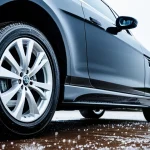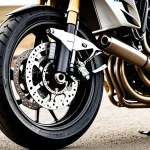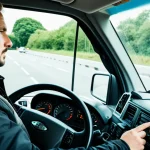Overview of Lane-Keeping Assist Technology
Lane-Keeping Assist is a pivotal vehicle safety technology ensuring a smoother, safer driving experience. By utilizing cameras and sensors, this technology monitors lane markings and gently nudges the vehicle back on course if it detects unintended drifting. Positioned as a critical tool in accident prevention, Lane-Keeping Assist reduces the risk of side impacts by maintaining consistent lane positioning.
The evolution of Lane-Keeping Assist has been significant, driven by advances in artificial intelligence and sensor technology. Modern systems are remarkably precise, capable of functioning even in adverse weather or poor visibility. Continuous innovation has seen the integration of features such as adaptive cruise control, which seamlessly complements lane-keeping capabilities.
Cela peut vous intéresser : Expert Strategies for Preventing Overheating in Your Vintage British Convertible: Top Cooling Tips Revealed!
Attention to vehicle safety technology has grown as road safety garners increased emphasis globally, pressuring automakers to enhance Lane-Keeping Assist systems. From its basic inception, designed to alert drivers to lane departure, the technology now provides semi-autonomous steering support, showcasing impressive adaptability and reliability. As it stands, Lane-Keeping Assist has earned its place as an indispensable safety measure in contemporary vehicles, showcasing rapid advancement in recent years.
Specific Challenges of UK Rural Roads
Navigating through UK rural roads presents unique challenges due to their distinctive characteristics. These roads often feature narrow lanes, fluctuating road widths, and sharp bends, which can pose significant driving hurdles. The limited visibility caused by hedgerows or high banks further complicates driving conditions, demanding sharper focus from drivers and heightening the risks of accidents.
Lire également : Enhance Your Hybrid’s Fuel Efficiency with These Winter Driving Tips in the UK
Rural roads are notorious for their unpredictable surfaces, frequently marred by potholes and uneven patches. Such conditions affect vehicle handling and can compromise the effectiveness of lane-keeping systems. Uneven surfaces and sudden changes in road width add to the complexity, challenging the precision of lane-keeping assist technologies, which thrive on well-defined lane markings and consistent road dimensions.
One notable challenge is adapting lane-keeping systems to accommodate these variables. Adjustments in vehicle sensors and algorithms are crucial to enhancing system performance in rural environments. Overcoming the geographical and infrastructural limitations of UK roads requires ongoing adaptation and technology integration, ensuring that vehicle safety technology remains effective even in less-than-ideal driving scenarios. Emphasizing such customization is pivotal for advancing accident prevention and ensuring the safety of all road users.
Customizing Lane-Keeping Assist for UK Driving Conditions
Customizing Lane-Keeping Assist for the intricacies of UK driving conditions is essential for enhancing vehicle safety and performance. Developing an understanding of the necessary adjustments is pivotal—beginning with detailed technical specifications. These involve recalibrating sensors to adapt to narrow rural roads and fluctuating road dimensions. Such adjustments require precision to ensure the lane-keeping system’s capability to accurately discern lane boundaries amidst unpredictable changes in road width and surface quality.
Technical Specifications for Customization
Achieving effective lane-keeping involves integrating additional technologies; GPS and sophisticated mapping systems enhance the precision of vehicle configurations. Advanced GPS integration allows vehicles to pre-empt challenging bends and narrow passes by adjusting capabilities proactively. Mapping systems, on the other hand, enrich data accuracy, supplying real-time updates about road conditions and layout.
Importance of Vehicle Calibration
Vehicle calibration techniques, tailored for rural environments, are another vital aspect. Improved accuracy hinges on calibrating systems to account for frequent navigational shifts, ensuring lane-keeping systems respond nimbly and reliably in these scenarios. With tailored configurations and dynamic responsiveness, vehicles become better equipped for the specific demands presented by rural driving challenges, ultimately enhancing the safety and performance of lane-keeping technologies.
Case Studies and Research Analysis
Understanding real-world applications of Lane-Keeping Assist technology is crucial in evaluating its effectiveness, especially in challenging UK rural roads. Several comprehensive research studies provide insights into how different variables affect the performance of these systems in rural settings. For instance, a study conducted by the University of Bristol evaluated Lane-Keeping Assist under varying driving conditions, focusing on narrow lanes and inconsistent road surfaces. The findings suggested that precise vehicle calibration and advanced sensor integration are vital for optimal performance.
Case studies also highlight successful vehicle configurations that manage these challenges effectively. Vehicles with enhanced mapping technologies demonstrated better adaptability to fluctuating lane widths and sharp bends, showcasing the importance of technology integration. Such adaptations not only improve safety but also enhance overall driving experience on rural roads.
Additionally, lessons learned from these studies emphasize the necessity of continuous advancements in vehicle safety technology. Ensuring that systems can handle unique road characteristics is paramount. These insights drive further development and customization, ultimately enhancing lane-keeping efficiency and contributing significantly to road safety efforts in rural areas.
Comparing Different Models and Technologies
When it comes to Vehicle Comparison in the realm of Lane-Keeping Assist technology, several key models emerge as leaders. Noteworthy vehicles equipped with this vehicle safety technology include models like the Tesla Model 3, Mercedes-Benz S-Class, and the Volvo XC60. Each model exemplifies unique strengths within lane-keeping capabilities.
Overview of Leading Models
- Tesla Model 3: Known for its advanced driver-assistance capabilities, it offers precise lane-centering and smooth integration with other safety technologies.
- Mercedes-Benz S-Class: Excels with innovative features like active lane-keeping and an intelligent sensory system that adapts dynamically to driving conditions.
- Volvo XC60: Offers a robust lane-keeping assist system with added safety measures, appealing to users seeking reliability.
Performance Ratings
The Performance Ratings of these models reflect their adaptability to rural driving challenges. Each vehicle is reviewed for its effectiveness in maintaining lane discipline amidst narrow lanes and variable road surfaces. The intelligent systems in these models detect and adjust to road conditions, ensuring heightened road safety.
Value for Users
Evaluating cost-effectiveness, these models provide excellent value given their advanced technology integration. User satisfaction ratings highlight superior driving experiences, particularly in challenging driving conditions.
Expert Opinions on Future Developments
Lane-Keeping Assist Technology is poised for significant advancements, with experts predicting substantial enhancements tailored to the idiosyncrasies of UK rural roads. Expert Insights suggest that future trends will focus on further integrating artificial intelligence to improve decision-making capabilities in lane-keeping systems. This will enable vehicles to learn from past driving experiences and adapt more efficiently to specific road challenges.
Experts also foresee increased personalization, where systems are customized to individual driving styles, enhancing both safety and comfort. This customization is particularly crucial for rural settings, where road safety hinges on the adaptability of vehicle systems under varying driving conditions.
Future developments also emphasize sustainability, incorporating eco-friendly materials and energy-efficient technologies in safety systems. The importance of this evolution is underscored by the growing global emphasis on reducing carbon footprints.
Ongoing research and development are critical to this evolution. Collaborations between major automotive manufacturers and tech firms are accelerating technological integration, ensuring that future vehicle safety technology innovations continue to safeguard drivers more effectively across diverse driving environments. This commitment to innovation reflects a dedication to advancing road safety, crucial in mitigating the distinctive hazards posed by rural roads.









